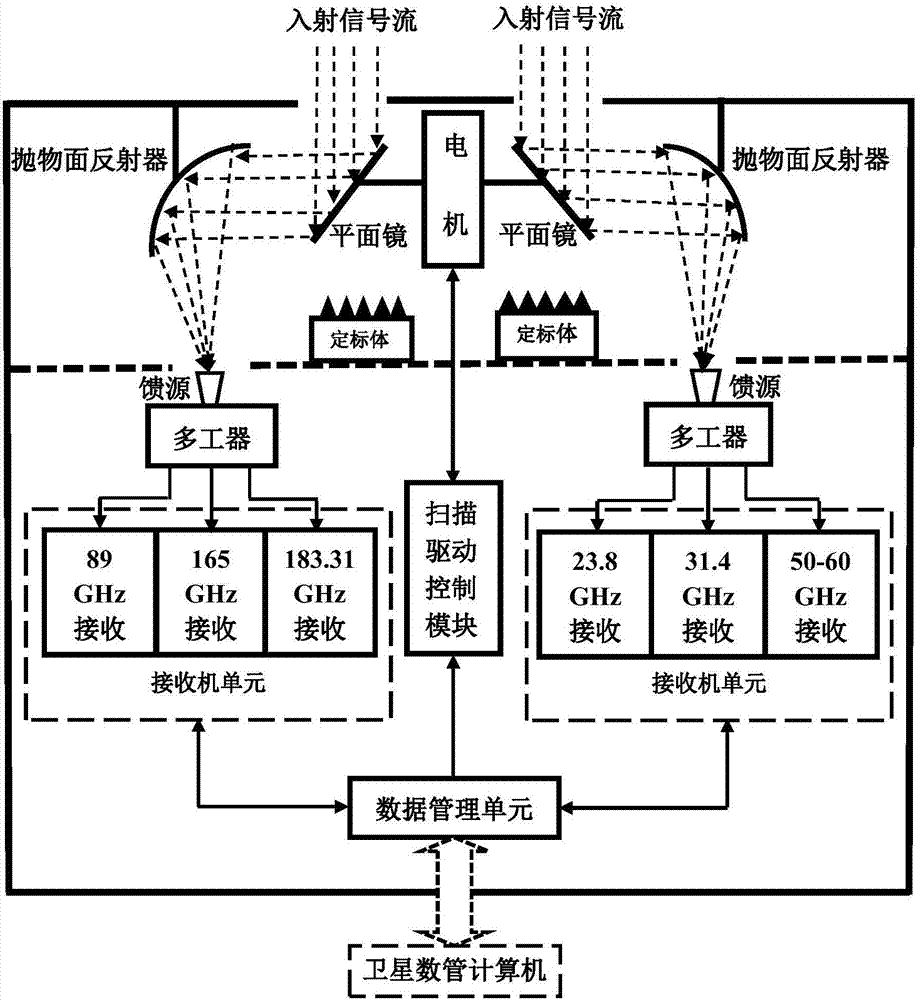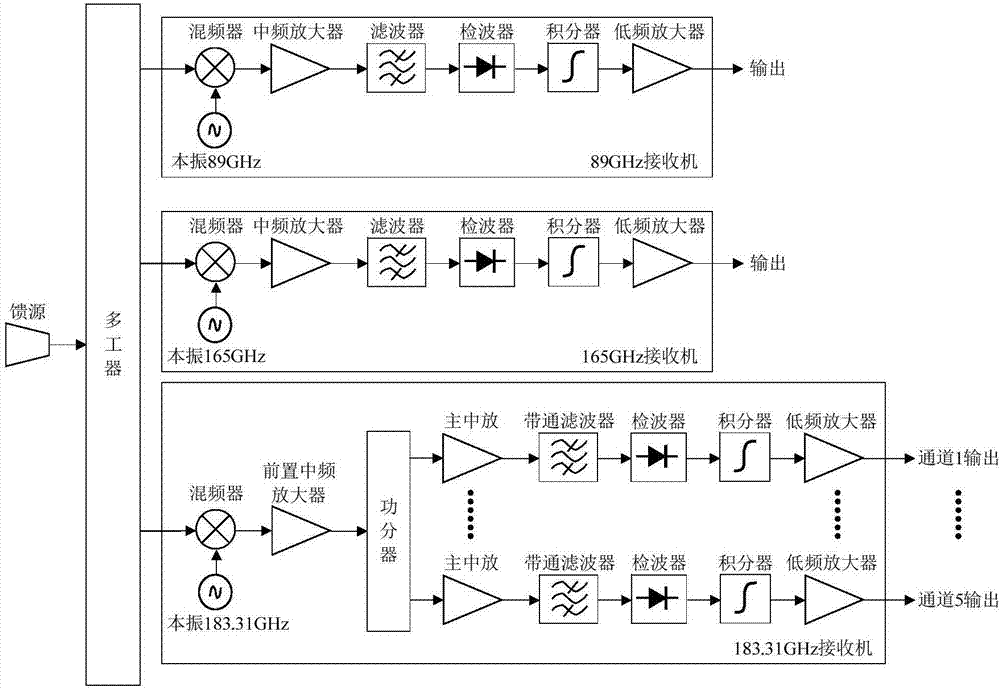Space-borne microwave atmospheric sounding instrument
A spaceborne microwave and detector technology, which is applied in the field of microwave remote sensing, can solve the problems of the standing wave ratio change and signal fluctuation of the antenna feeder system, and achieve the effects of reducing system noise temperature, low DC power consumption, and eliminating interference errors.
- Summary
- Abstract
- Description
- Claims
- Application Information
AI Technical Summary
Benefits of technology
Problems solved by technology
Method used
Image
Examples
Embodiment Construction
[0018] A spaceborne microwave atmospheric sounder according to the present invention will be described in detail below in conjunction with the accompanying drawings and embodiments.
[0019] like figure 1 As shown, the present invention provides a spaceborne microwave atmospheric sounder, which comprises: a plane mirror, a parabolic reflector, a motor, a scanning drive control module, a feed source, a multiplexer, a receiver unit, and a calibration body . The motor drives the plane mirror to rotate under the control of the scanning drive control module, so that the plane mirror can perform atmospheric detection scanning and calibration. The plane mirror reflects the received electromagnetic wave signal to the parabolic reflector in the form of a plane wave by scanning the atmosphere and the calibration body, and the parabolic reflector re-reflects the plane wave into the feed source opposite to it. The multiplexer is used to separate the frequency of the electromagnetic wave...
PUM
 Login to View More
Login to View More Abstract
Description
Claims
Application Information
 Login to View More
Login to View More - R&D
- Intellectual Property
- Life Sciences
- Materials
- Tech Scout
- Unparalleled Data Quality
- Higher Quality Content
- 60% Fewer Hallucinations
Browse by: Latest US Patents, China's latest patents, Technical Efficacy Thesaurus, Application Domain, Technology Topic, Popular Technical Reports.
© 2025 PatSnap. All rights reserved.Legal|Privacy policy|Modern Slavery Act Transparency Statement|Sitemap|About US| Contact US: help@patsnap.com



